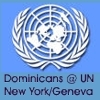

| BRIEFING - September 7, 2011 | To learn more about the Millenium Development Goals, click on the graphic Past Briefings: August 24, 2011 August 10, 2011 June 22, 2011 June 8, 2011 May 11, 2011 April 27, 2011 April 6, 2011 March 23, 2011 March 9, 2011 February 9, 2011 January 26, 2011 January 12, 2011 |
||
Somalia: Statistics are sons and daughters, boys and girls
The Horn of Africa has been much in the news lately. This area, which includes the countries of Djibouti, Somalia, Kenya and Ethiopia, is in the grip of an unprecedented humanitarian crisis. We are witnessing the most serious food insecurity situation in the world today, exacerbated by the worst drought to hit the region in over 60 years, and political instability and high food prices only make matters worse. At least 12.4 million people are affected, the most vulnerable being those who rely on livestock. More than half a million children are dangerously malnourished. Somalia, which has not had a central government for the past two decades, has been the hardest hit, with approximately 3.2 million citizens facing intermittent starvation. The United Nations has declared two regions of southern Somalia as famine areas, and reports that malnutrition rates there are currently the highest in the world, reaching 50 percent. Unless the global response increases dramatically, the famine will continue to spread. Every day, thousands of desperate Somalis flee to Ethiopia, Yemen and Kenya. One quarter of Somalia’s 7.5 million people is displaced. The largest refugee camp in the world is presently located in Dadaab, in northeastern Kenya, where there are an estimated 1,295 new arrivals per day. The situation is likely to deteriorate over the coming months, given the current levels of malnutrition and mortality, and the likelihood of increasing food prices and a harsh dry season. It is clear that this humanitarian crisis is the result of a confluence of factors. An article in the Aug. 19 edition of International Business Times entitled “The Somalia Famine: 5 Things to Know,” highlights the complexity of the situation. I found the information helpful, and thought I would share it with you in this briefing. Here are the five things to know:
UNICEF Executive Director Anthony Lake offered these words at a news conference at United Nations headquarters to mark World Humanitarian Day:
The article concludes by reminding us that even if the famine is brought under control by humanitarian aid, another disaster will soon follow, unless Somalia can control its own chaos. Somalia has been in a perpetual state of war… and there can be no prosperity without there first being peace. For more information on the humanitarian crisis in the Horn of Africa, and suggested ways to respond, please visit the following:
I encourage you to pay particular attention to Bread for the World’s background paper: “Lives at Stake: Protect Global Food Security Programs,” by Michele Learner. The paper reminds us that those who support cuts to food security assistance feel that the United States needs to cut spending and reduce the budget deficit. However, international development assistance did not cause, nor can it fix, our current budget crisis. The paper goes on to explain that the cut to fiscal year 2011 food aid amounted to $354 million, compared to the $1.7 trillion 2011 U.S. budget deficit. It is abundantly clear that cuts to food aid and other food-security efforts harm some of the poorest and most marginalized people in the world, without coming anywhere near to solving our budget deficit issues. It is good to keep this in mind amidst the mean-spirited rhetoric we hear all too often in our very polarized political discourse. Related articles UN Officials Say Famine Is Widening in Somalia
|
Dominican Leadership Conference
Building relationships and collaborating in the mission of preaching the Gospel
29000 West Eleven Mile Road
Farmington Hills MI 48336
248-536-3234 Contact: Executive Director
